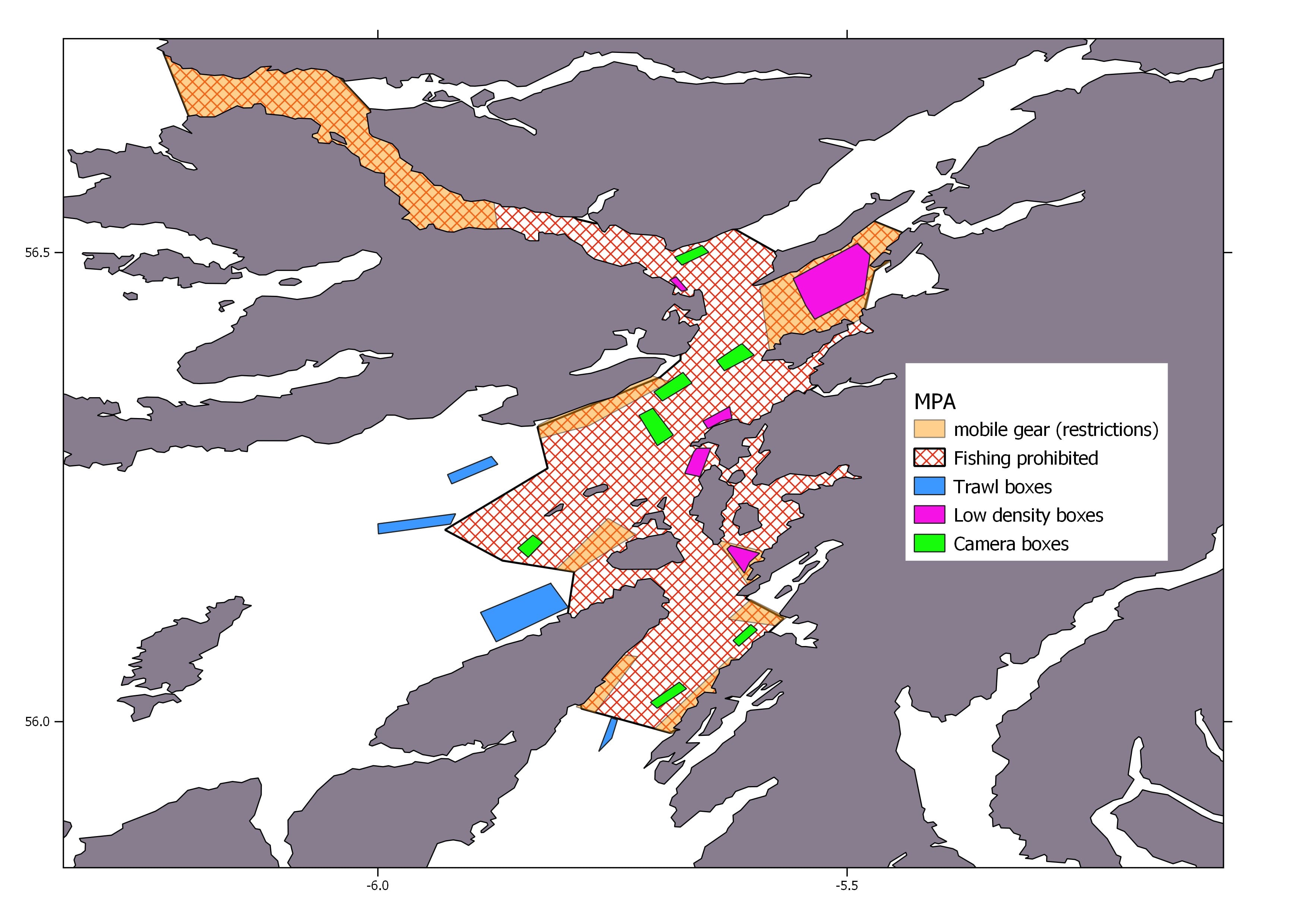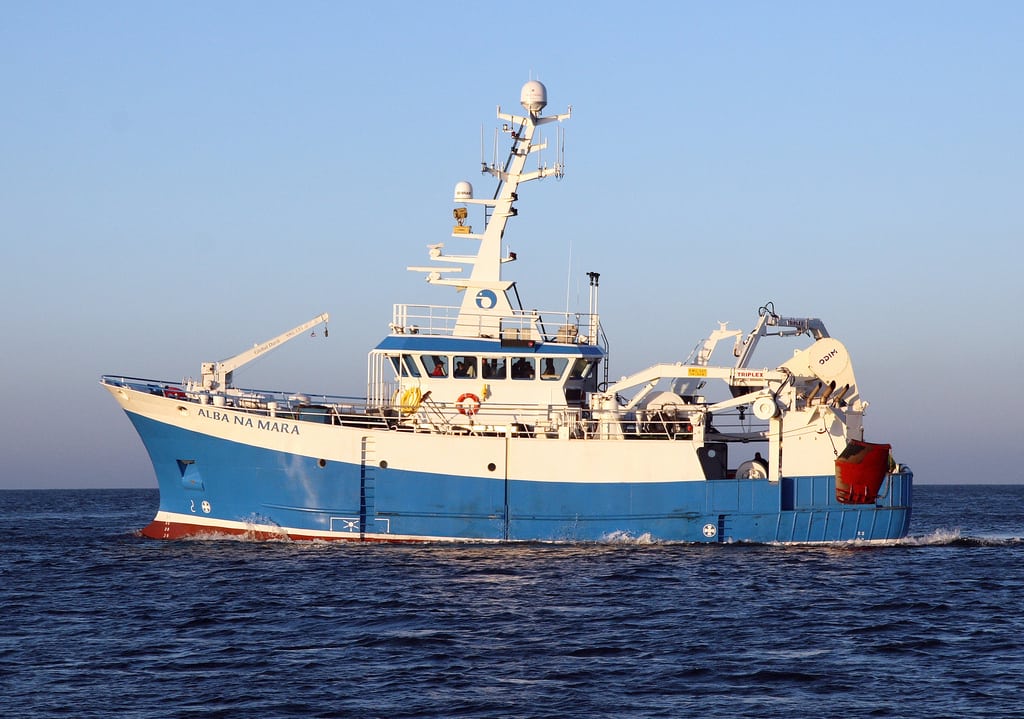Marine
Skate Research: Survey in the Loch Sunart to the Sound of Jura MPA
September 19, 2019 by Marine Directorate Communications 1 Comment | Category Collaborations, Fisheries, Marine Directorate general, Marine Directorate Science, Marine Directorate Surveys, Research Vessel Surveys
MRV Alba na Mara
Survey: 1619A Programme
Duration: 24-30 September 2019
Background and Objectives:
Survey 1619A will conduct a benthic survey of juvenile common skate within and around the Loch Sunart to the Sound of Jura Nature Conservation Marine Protected Area (hereafter referred to as MPA). The primary objective of survey 1619A is to assess the presence of juvenile common skate within the MPA and the type of habitat juveniles are associated with. This survey is, therefore, necessary to estimate the efficiency of the management measure at protecting this Priority Marine Feature (PMF) during the entirety of its life-cycle.
The study will utilise two sampling methods: demersal tows and baited-camera to assess the presence of Juvenile skate. Habitat will be characterised using a combination of hydro-acoustic recordings (RoxAnn) for seabed classification and sediment grab samples.
Data from these surveys is needed for the monitoring and development of the Scottish MPA network and will inform the development of species distribution models to study differences in habitat requirements between adults and juveniles. Skate sampled in the trawl will be measured and tagged and a genetic sample will be collected (for further analyses of population structure) before being released.
A second objective of this survey is to develop and calibrate a non-invasive method to assess PMF presence and abundance using eDNA. DNA will be extracted from water samples collected at set depths with reverser bottles and from sediment samples from the grabs mentioned above. Samples will be used post-survey to analyse the presence and amount of DNA corresponding to common skate. If successful, this approach may be used at a larger scale to gain knowledge of species distribution.
Specific Survey Objectives:
- Assess the presence of juvenile skate using two different sampling methods.
- Record substrate features at the point of sampling.
- Collect DNA from water and sediment samples to develop and calibrate a non-invasive detection method.
- Collect genetic material and tag individuals to investigate issues relating to stock structure and population processes.
Embarkation:
Scientists will join the vessel on 23 September around 12:00 (BST). Weather permitting Alba na Mara will depart the following morning, heading for the first survey site.
Survey Work:
The survey will be split into three distinct activities – demersal trawling, baited camera work, and water/sediment sampling – which will be performed at each station (except demersal trawling in restricted areas).

Figure 1. 2019 survey sites within and outside of the Loch Sunart to the Sound of Jura Nature Conservation Marine Protected Area
Demersal Fishing Survey
The demersal survey (10-15 minute tows) will assess the abundance, length-frequency-distribution, and weight-at-length of common skate at four fixed sites (3-5 tows per site) just outside of the MPA (Figure 1- Trawl boxes). Scanmar units will be fitted to the wings and head line of the BT158 trawl to ensure the net is fishing correctly. All common skates will be measured and a fin clip will be collected for further genetic analyses. Each individual will be screened for the presence of tags, if no tag is present the fish will be tagged (PIT tags) before being returned.
Baited Cameras
In addition to demersal survey sites (Figure 1- Trawl boxes), baited underwater video camera frames will be deployed in the MPA (Figure 1 Camera boxes) during daylight hours. These will be left in the water for approximately 1.5 hours before being retrieved. Footage will be downloaded to external media at the end of each working day. Presence of common skate, life-stage (juvenile/adult) and substrate type (assessed visually) will be classified post-survey.
Substrate Classification
To further aid the classification of the substrate at each sampling site, 1619A will also acquire RoxAnn records of the surveyed area and a Day grab will be deployed. Sediment samples will be collected from each grab and stored in the freezer. These will be analysed on return to the laboratory to determine particle size distribution in the sediment at each sample location.
eDNA Samples
Sediment and water samples will be collected to investigate feasibility of detection of flapper skate using environmental DNA shed in marine environment. Sediment samples will be collected using day grab and subsamples with be taken using sterile 50 ml falcon tubes. Water samples will be collected using reverser bottles within 5 m and at 10 m from the seabed. Collected water will be filtered through 0.8 micron filters using sterile 50 ml syringe. Sediment and filter samples will be stored at -20℃.
Operations:
Survey operations will take place between the hours of 07:00 and 19:00 (all times BST). Stations will be surveyed depending on the prevailing weather conditions i.e. if wind strengths or wave heights are adverse, a precautionary approach will be adopted and those with adequate shelter from the weather will be selected. Alternatively, in poorer weather the trawl survey may be prioritised over other activities.
The vessel will leave the study area on 29 September to allow sufficient time to travel to Troon. Unloading will occur in Troon on Monday 30 September. Scientists will disembark at this time.
Further Information:
- Skate Research: Survey in the Loch Sunart to the Sound of Jura MPA Topic Sheet
- Alba na Mara Topic Sheet
- Marine Scotland Science Topic sheet
- University of St Andrews
- School of Biology (University of St Andrews)
- Scottish Natural Heritage
Tags: Alba na Mara, common skate, fisheries, Flapper Skate, Loch Sunart, marine environment, Marine Protected Area, MPA, Nature Conservation Marine Protected Area, PMF, Priority Marine Feature, research, research survey, sampling, science, Scottish, sediment samples, Sound of Jura, Survey



After watching Autumnwatch and their piece in skate sacs I scoured the Beach at Corsewell Point where I do a daily litter pick and came across a tiny skate sac. I have found these before and wondered what they were.